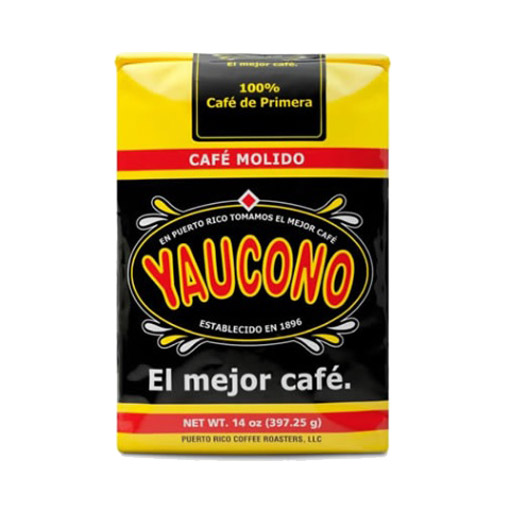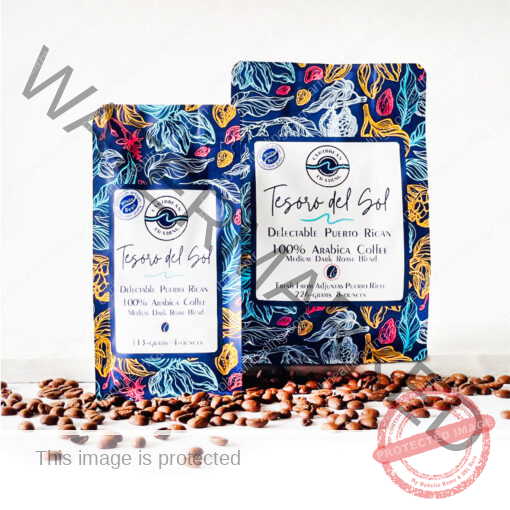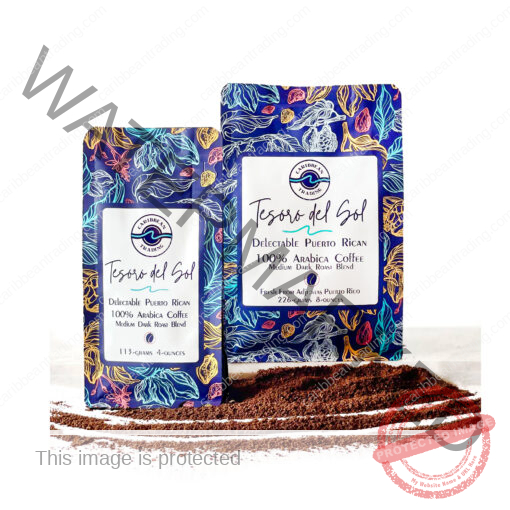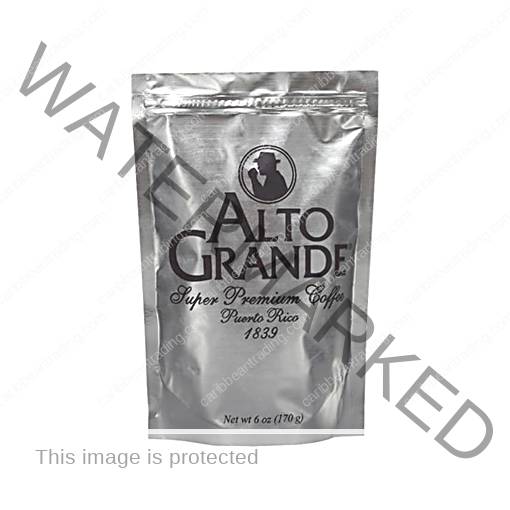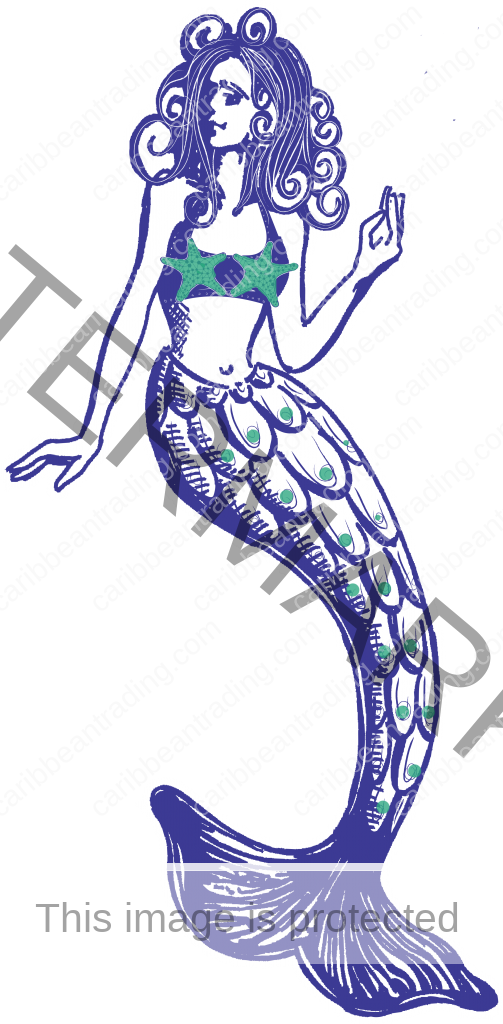Puerto Rico
All About Puerto Rico Coffee – History and Best Brands
Few people resist the tempting aroma of coffee. Getting up in the morning and sipping a cup looking out the window is the best way to start the day.
If you think about it, you will see how this beverage is present in almost every moment of your daily life. It’s common to spot cups of coffee scattered around any office. Even when meeting friends, at least one of them will likely drink free
For that reason, you should choose an option that, besides being the most delicious, is eco-friendly. After tasting many varieties, you will realize why Puerto Rico coffee is the tastiest coffee you will ever savor in life.
The Origin of Puerto Rico Coffee
This popular beverage dates back to the 18th century after the Spanish conquests in Central America. Today, Puerto Rican coffee is the most popular in the Caribbean.
It came from Santo Domingo in 1736 and, during the following years, it expanded its production to the entire island.
Puerto Rican coffee grows in the mountains of central Puerto Rico; from Orocovis to Mayagüez. This includes Lares, Adjuntas, Maricao, San Sebastián, Las Marías, Jayuya, Utuado, Uroyan, Ciales, Yauco, Ponce and Aguas Buenas.
The Central American island is one of the world’s main producers of this grain. One of the main growing areas sits at an altitude of 2300 feet in the Uroyan Mountains,west of the country.
The nutrients of the volcanic soil make Puerto Rican coffee one of the most demanded for its luxury gourmet characteristics.
The harvesting process and subsequent roasting of coffee beans also play an important role: sophisticated production methods allow Puerto Rican coffee to reach the highest of quality standards.
Caribbean coffee achieved such a reputation that it even became the exclusive drink of the Pope and the Royal Courts of Europe.
Types of Puerto Rico coffee
Currently, among the types of coffee beans harvested in Puerto Rico, the most popular is the Arabica type. These beans feature a sweet and chocolate-like taste that many are fond of.
Its most popular varieties are Bourbon, Typica, Pacas and Catimor. You can find artisanal options, and hand-picked to guarantee a unique taste.
Arabica vs Robusta Coffee
These are probably the two most popular types of coffee in the world. Although it may not seem like it, different types of coffee are vastly different from each other.
Let’s talk about the Robusta coffee first. The plant from which is produced can reach a height of up to 6 meters. Since it consists of 2.5% of caffeine, Robusta is one of the strongest coffees. As a result, it has a much more bitter taste.
Robusta plants are much easier to grow and care for due to their adaptability. They don’t need to be in an ideal climate or have a certain percentage of rainfall.
These characteristics have allowed its cultivation to expand to more places at cheaper costs. However, Robusta coffe is considered to be a lower quality because of this. There are not many flavor nuances within this type.
Alternatively, the Arabica beans are a signature of Puerto Rico’s coffee. High altitudes make the Caribbean an ideal climate to harvest these beans. It is a mild coffee, only containing a maximum of 1.5% caffeine in it.
The Arabica plant can only be cultivated at altitudes above 900 meters. Temperature is a very important factor, too: between 17 and 22 degrees Celsius are a must.
This plant requires much more care and, as a consequence, is more expensive than the Robusta beans. Nevertheless, it’s a much healthier and tastier coffee.
Arabica coffee contains many oils and natural sugars. It has a fruitier and sweeter flavor, as opposed to the intensely bitter Robusta coffee.
Puerto Rico Coffee Tour
In addition to having some of the most beautiful beaches in the world, Puerto Rico owns coffee that attracts hundreds of tourists every year.
There are lots of coffee shops to visit and buy from, so not finding new options to try out won’t be an issue. It’s advisable to pick the most popular coffee brands of the island: you won’t be disappointed.
If you travel to Puerto Rico, don’t miss out on these Caribbean plantations:
Hacienda Buenas vista
It is one of the largest coffee plantations in Puerto Rico.
This farm has been on the island since the 19th century and has 87 acres. Nowadays, it functions as a museum. You can stop by and sight its stables, old mills and traditional houses.
Hacienda Tres Angeles
Located in the city of Adjuntas, this hacienda is another great plantation you can find on the Puerto Rico Coffee Tour.
Here you will be able to see from up close the coffee’s productions: plantation, care, harvesting, and beans’ processing. Additionally, you’ll get to enjoy a spectacular scenery in the middle of the mountains.
Hacienda Gran Batey
Founded in 2003, this is one of the newest coffee plantations in Puerto Rico.
Hacienda Gran Batey is in Utuado, and produces Arabica coffee upon request. Its owners use unconventional techniques for the beans’ processing, making it very famous in the area.
This place is a must for anyone that wonders how coffee was made several years ago. Even better, Hacienda Gran Batey offers cake and coffee free of charge!
Hacienda Pomarrosa
Founded in 1995 at 3,000 meters above sea level, in the mountains of Ponce, sits Hacienda Pomarrosa.
This hacienda is quite famous for its view: you can look at the mountains and the Caribbean Sea at the same time. Not only that, but you can also stay in there for a few days!
This is the perfect hacienda for mountain enthusiasts that cherish gourmet coffee.
Hacienda San Pedro
This hacienda only accepts visits on weekends. It has a small museum and a cafeteria where you can relish its trademark coffee.
It is located in Jayuya and has guided tours where they show the different processes the coffee goes through before it’s sold.
Hacienda Monte Alto
Like Hacienda Tres Angeles, Monte Alto has been located in the Adjuntas region since 1978.
This plantation boasts 100% organic farming techniques. In fact, you can even encounter wild animals thanks to how eco-friendly the place is!
Moreover, there are many other vegetables planted and harvested here besides coffee.
You will be able to learn about their 100% organic farming techniques.
Ciales’ Museo del Café
There’s a small coffee museum in Ciales that offers a great description of the history of coffee in Puerto Rico.
Despite its size, Museo del Café has a lot of information of Puerto Rican coffee. You’ll learn all about the history of Puerto Rico’s coffee and how it was made centuries ago.
Expo Café y Chocolate
This is not a place, but rather an event held at the Puerto Rico Convention Center.
The event features more than 100 exhibition spaces, workshops, conferences, tastings and demonstrations by professionals in the coffee and chocolate industries.
Keep in mind the Expo Café y Chocolate takes place in certain days. Time your trip accordingly if you want to experience this wonderful event!
Maricao Coffee Festival
This is an annual festival that is usually celebrated on the second weekend in February. It takes place in Maricao, El Pueblo de Las Indieras.
The Coffee Festival lasts for 3 days and celebrates the success Puerto Rican coffee has had over the years.
However, coffee gourmet is not the only type of cuisine displayed during La Toma de Café. Many other foods, folklore and art make presence too. The Maricao Coffee Festival is regarded as one of the best events of the island.
There are 2 companies in Puerto Rico that organize carefully arranged trips for coffee lovers:
- Specialty Coffee Tasting Tour: this tour is offered by the folks at Flavors Food Tours. It’s a one-hour tour. Although this shop is located in Viejo San Juan, they travel around all Puerto Rico to cherish similar cuisine festivals.
- La Ruta del Café: this tour begins in Mayagüez and goes a long way to the center of Puerto Rico, Ciales. La Ruta del Café includes important coffee makers centers like Maricao, Las Marías and Ponce, among others.
Puerto Rico coffee processing
One of the characteristics that make Puerto Rican coffee so distinguished worldwide is its processing.
Being a mass consumption product, many companies use industrialized methods to obtain a coffee suitable for sale. This is not the case for Puerto Rican coffee makers.
The Caribbean coffee goes through a completely natural and artisanal process so as to maintain its traditional flavor.
Many companies choose to meticulously pick the coffee beans. Although time-consuming, it ensures the best coffee quality. Beans are examined to see whether to use them or discard them due to poor caliber.
Once this first step is completed, each ripe bean undergoes a process, often done manually, where the pulp and husk are separated from the bean.
Finally, the beans are placed on large trays for subsequent drying up in specialized ovens. Many Puerto Rican coffee brands opt for natural sun drying, such as Tesoro del Sol or San Pedro. This guarantees a more natural and healthier drying.
When the beans are ready for sale, the last step is sorting by color, size and weight and then packaging.
Top 10 Best Puerto Rico Coffees
What makes Puerto Rican coffee so unique are its aroma and flavor. Its blend has a mixture of chocolate flavor, sweetness and freshness that no other beans can reproduce.
Nevertheless, each Puerto Rican coffee shop have their distinct charm and taste. If you want to savor the best out of Puerto Rico’s coffee, then you’ll need to try these brands.
1. Tesoro del Sol:
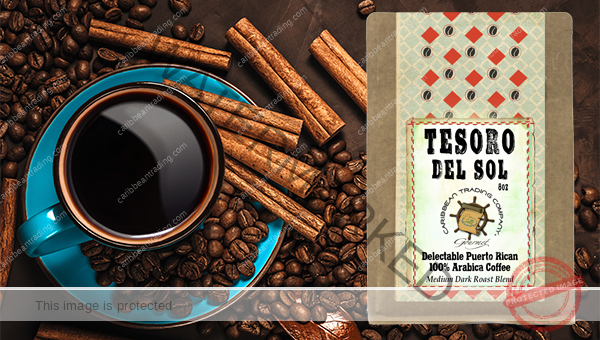
Tesoro del Sol freshly roasted ground coffee is produced at the top of the Uroyan Mountains. Among Puerto Rican coffee brands, it is one of the healthiest and tastiest.
It has an environmentally friendly production process. The producing farm doesn’t use pesticides and the coffee is harvested by hand after a natural maturation process. Drying and storage are carried out under strict quality standards.
Tesoro del Sol coffee is 100% Arabica and has a smooth flavor that will remind you of the Caribe anywhere, anytime.
2. Di Laris Kosher Coffee
Produced in the Lealtad hacienda since 1830, it is a kosher product that preserves the traditional flavor of Puerto Rican coffee. This plantation is about 400 meters above sea level.
The coffee beans are dried up in the sun and then roasted in a dark press.
It bears the name Di Laris, in honor of the Lares’ people’s way of speaking. This coffee is ideal for those who like it with a dash of milk.
3. Cuatro Sombras
This coffee is 100% Arabica. Grown in the middle of the Yauco mountains at an altitude of more than 1000 meters above sea level.
Like many others, they use a sun-drying process. The beans are kept under controlled climatic conditions until it’s time to grade them. Its main characteristic is its acidity, which has a touch of caramel and spice.
This coffee is made on a farm that has belonged to the same family for several years.
4. San Pedro
You can find it in many coffee shops in Puerto Rico. Its hacienda resides on the mountains of Jayuya and is four generations old. They produce one of the sweetest coffee on the island, offering flavored varieties with sage and rosemary.
San Pedro coffee is also grown and picked by hand. The drying process is extremely artisanal. It has the same way it was done 100 years ago.
5. Puta Madre
Although Puta Madre’s name awards very sour reactions from most Latin Americans, its taste sure doesn’t. It is one of the most popular ones in Puerto Rico: a coffee that many people never forget!
The brand plants its coffee in one of the highest altitude regions of the island: the Adjuntas region. Its peculiar name comes from the expression marvelled Andaluces gave when they first tasted this coffee.
6. Don Ruiz
Don Ruiz coffee is part of a family company that’s been around for four generations. Its plantation is located in the mountains of Yauco at more than 3000 meters above sea level.
The entire process, from cultivation to drying and sorting, is manually carried out. It is one of the successful brands among Puerto Rico coffee producers.
Also, Don Ruiz is one of the coffee companies qualified as “nature friendly”. Their growers use ecological tools that recycle water and reduce CO2 emissions during the drying process.
The Don Ruiz hacienda also has a museum where you can learn more about the history of Puerto Rican coffee and the island’s customs.
7. Lareño
Like many Puerto Rican companies, this coffee has been produced for several generations by the same family. It’s been in the Lares region since 1989 and has a policy of making a 100% handmade product.
The planting and care of the plants are done exclusively by expert farmers. These same farmers are in charge of harvesting, washing and preparing the beans for later roasting.
8. Yaucono
Yaucono’s origins started in Miramar, 1896, when a local farmer, Miguel Ruiz, fell head over heels for the coffee industry.
After Don Ruiz’s departure in 1916, the Yaucono company bought the deceased farmer’s hacienda to carry on his legacy. As of today, this Puerto Rican coffee has an intense flavor and aroma to it.
This brand is ideal for anyone who likes strong drinks to wake up.
9. Café Rico
This coffee cooperative was founded in 1924. Café Rico uses the revolutionary method of vacuum-packing its coffee beans for packaging.
This technique helps in preserving intense aroma of the coffee. Its headquarters are located in Ponce, on the southern coast of the island.
The company owns the only coffee tasting and cupping laboratory on the island.
10. Salomé
Salomé’s coffee is 100% Arabica. Its main plantation is located in the agricultural region of Mayagüez, at the center-north of the island.
It is one of the most ecological coffee options out there. Salomé’s farmers process the beans using a mill fueled by rainwater. Then, the beans are placed inside silos and sit there for 22 hours at low temperatures. This process is 100% free of agrochemicals
The final step is, of course, selecting the size and weight of the beans very carefully. A meticulous selection is the reason behind Salomé’s distinct taste remains mild with a mixture of sweet and bitter.
If you visit the Caribe, you can’t miss these coffee brands. You will be able to taste the most varied options and choose the one that best suits your palate.
The Perks of Brewing Puerto Rican Coffee with a Coffee Sock
Typically, making coffee at home is done with the help of a Black & Decker coffee pot, or other devices that require fussy filters and burners. As for the Puerto Rican way, all you needs is a saucepan and a coffee sock.
Ran out of coffee filters? No worries, a washable and re-usable coffee sock works just as great and, at $3, saves you money while reducing paper waste. Talk about a green cup of coffee.
Simple steps to brewing coffee the Puerto Rican way:
- Pour 1 cup of water for each cup of coffee you wish to make into a saucepan.
- Heat the water to a simmering point, which is 195 to 211°F. Don’t let it boil.
- Once the water is simmering, add ground coffee into the water. 1 teaspoon for every cup you want to make.
- Stir for about a minute while making sure the water stays at a simmer.
- Turn off the stove and let coffee stew and brew for about a minute. Then, stir some more.
- To remove the coffee grinds, strain the mixture using a coffee sock.
If you like your coffee black, you can strain directly into a cup. However, if you like your coffee with a dash of milk and sugar, you should do the following:
- Strain coffee into a large pot and let it rest there for a short time.
- Return the sauce pan to the burner and add a ¼ cup of milk and 1 teaspoon of sugar for every cup of coffee.
- Heat up the milk until it starts to foam around the edges, and stir regularly to help dissolve the sugar.
- Pour the coffee out of its temporary holding pot back into the saucepan. Now, heat the mixture to simmer it. Since you’ve already strained with a filter, the last thing you need to do is pouring it directly into cups. Enjoy!
To add some excitement to your brew, try making it with freshly ground coffee beans using a tabletop grinder. If you prefer to go with the pre-grounded version, you can get Tesoro del Sol Coffee.
How to Drink Coffee in Puerto Rico:
Puerto Rican coffee traditionally is served in three ways, all in small cups. There is no super-sizing or icing; it’s just good ol’ fashioned coffee:
- Expreso: Brewed in an espresso machine and usually taken black.
- Cortadito: An expresso layered coffee with a dash of milk.
- Café con leche: Like a latte, served with a lot of warm milk.
There are several ways to get your coffee fix while in Puerto Rico….
Coffee Houses and Shops
Artisanal coffee and coffeehouses have become increasingly more popular over recent years. As a result, there are tons of these shops all over the Caribbean island. That’s why Puerto Rico is considered the paradise of coffee enthusiasts.
However, some Puerto Rican states produce more coffee than others. Thanks to that variety, certain cities and brands offer a higher quality coffee.
Caribbean Trading Company – located in Río Grande and Rincón.
Offering its own brand of Arabica coffee harvested by local farms, this company offers a wonderfully smooth coffee. Free samples are available in-store any time. You can choose whether to get fresh beans or grounded coffee.
Old San Juan: This area has recently filled up with coffee houses with certified baristas, serving authentic quality Puerto Rican coffee straight from the farm.
- Café Poético: This shop has the feel of a writer’s den and is perfect for relaxing and reading the paper or working in a project.
- Cuatro Sombras: The coffee from this shop is quite popular for tourists and locals alike. Its main charm is the shop’s menu that is filled with several dishes.
- Caficultura: The atmosphere, thanks to the kind workers of Caficultura, is extremely friendly. Although the place is famous for its amazing coffee, the shop is a restaurant with many menus. However, it gets crowded often
- Café Cola’o: this little coffeehouse is locally owned and offers excellent locally-grown coffee. This shop has a great reputation among coffee lovers, but doesn’t stand out beside coffee brewing.
FAQS
Why is Puerto Rican coffee different from conventional coffee?
Puerto Rican coffee is 100% Arabica, which means there are no traces of Robusta coffee in it. For that reason, its flavor it’s very different from other coffee around the world; it’s way sweeter and smoother than the supermarket kind.
In the gastronomy industry, Puerto Rican coffee is considered to be gourmet coffee. Both its production and flavor are high in people’s regards: it’s a natural process that strives for better taste.
Moreover, the coffee’s special climatic conditions and care make it an achievement to produce and sale.
How do I know if the product I bought is authentic Puerto Rican coffee?
Always make sure to read the packaging properly. Since Puerto Rico coffee brands can only make Arabica coffee, you need to find the label stating the product is 100% Arabica.
Some companies are quite tricky with the labeling. Certain brands use the slogan “Arabica coffee” despite having a blend of both Arabica and Robusta coffee. Fortunately, they can’t hide any info regarding the product in the label.
However, that doesn’t mean coffee from these companies are bad quality, but they don’t hold a candle to the true artisan Puerto Rican coffee.
If you’re unsure of the quality of the coffee you want to buy, there are specific features you need to look out before buying. These tips will help you to pick which coffee is the best option.
Is Puerto Rican coffee a healthy beverage?
Due to the lower percentage of caffeine the Arabica variety has, this type of coffee is healthier than the Robusta one. Thus, it’s much friendlier to irritable stomachs.
Caffeine is the main responsible for the bitter taste of this beverage. Arabica coffee, having such a low percentage, will be less intense and, hence, will help in avoiding heartburn.
Are all Puerto Rican coffees the same?
Although they all have the main characteristic of being 100% Arabica, the flavor and quality will change according to the manufacturing process.
There are many aspects that affect coffee’s final results: type of irrigation, mechanical or hand drying and storage conditions, among other things. The rule of thumb is quite simple: the coffee’s quality is better the more natural its production is.
Should I add any sweetener?
Unlike most coffee, Puerto Rican coffee has a less bitter taste. There’s a faint mixture of chocolate and the sweetness present in most of the island’s coffee. Puerto Rico coffee makers proud themselves in how smooth their beans are.
Even so, you can and should add sweeteners if that’s how you drink your coffee. But, our advice is that you taste it before doing so. Most people are satisfied enough with the coffee’s vanilla flavor and don’t add any sweetener at all.
How to buy Puerto Rico coffee from anywhere in the world
If you want to have the best of Puerto Rico coffee at home, you can buy it online and receive it from the comfort of your own home.
Once you try it, you will never want to buy other run-off-the-mill coffee again!



